Tour de France tech: Look good, feel good, go fast
Mark Cavendish joins the Air Force
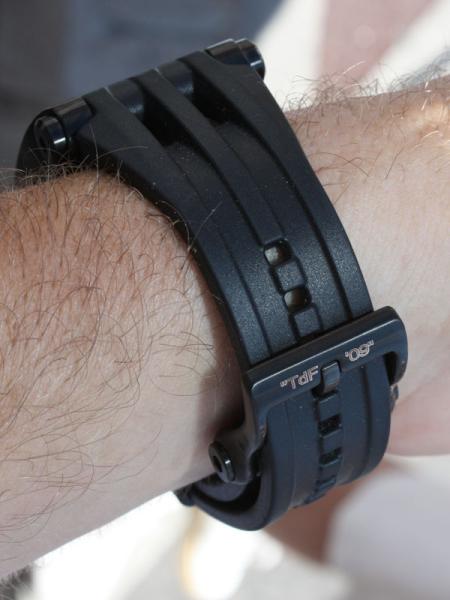

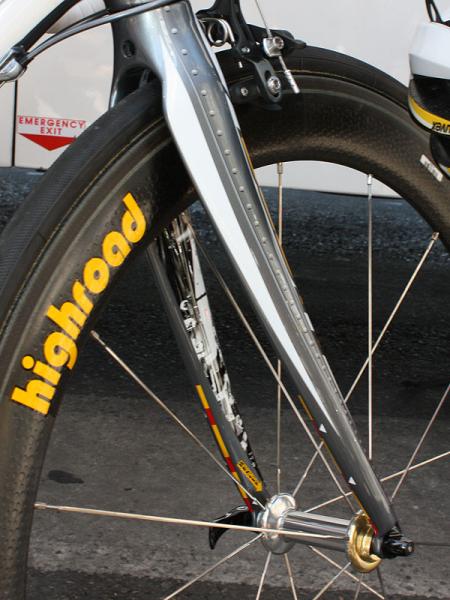
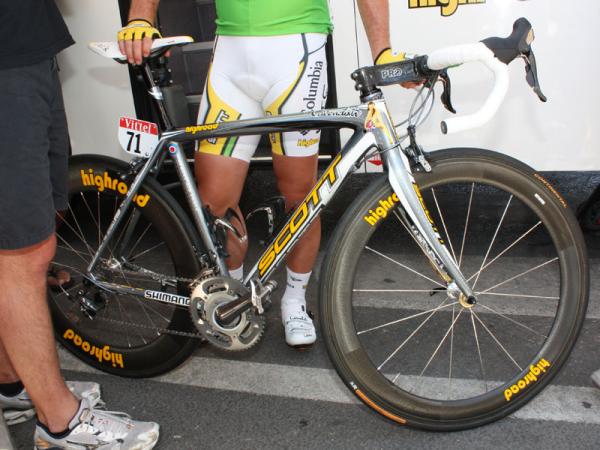
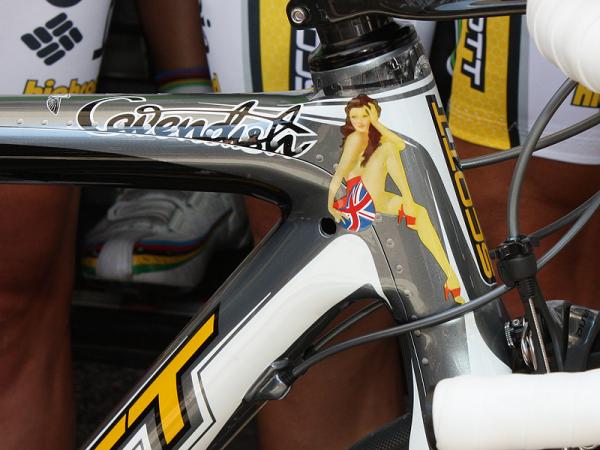
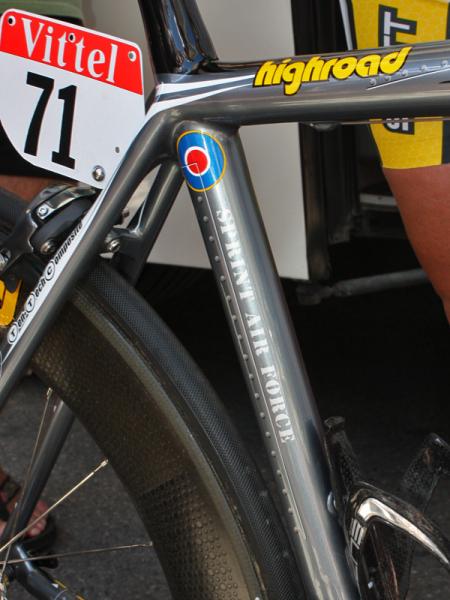
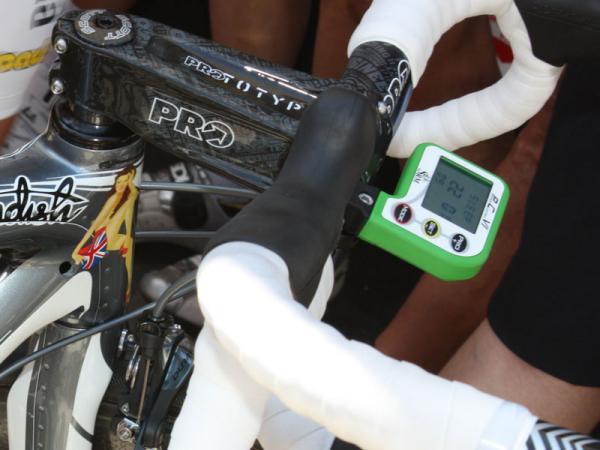
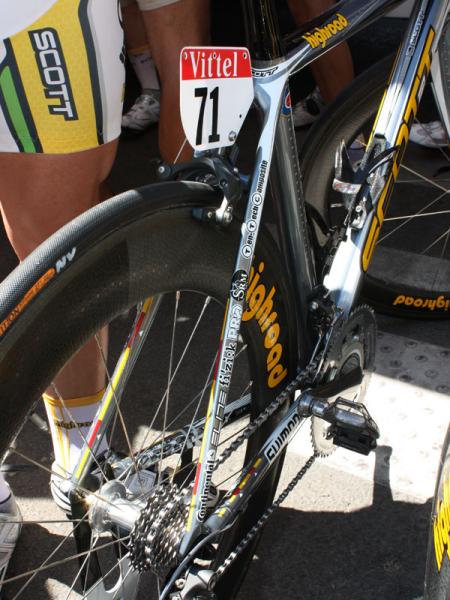
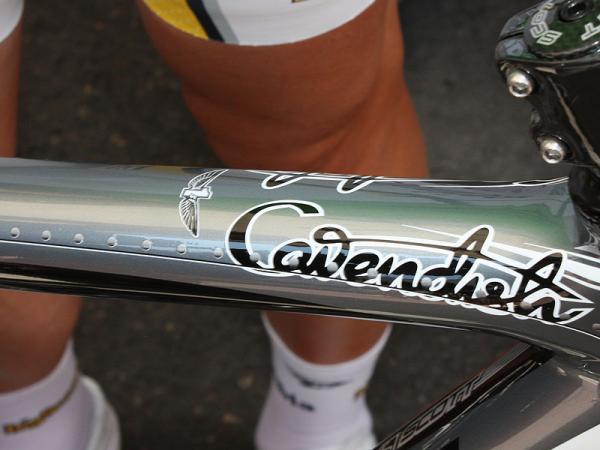



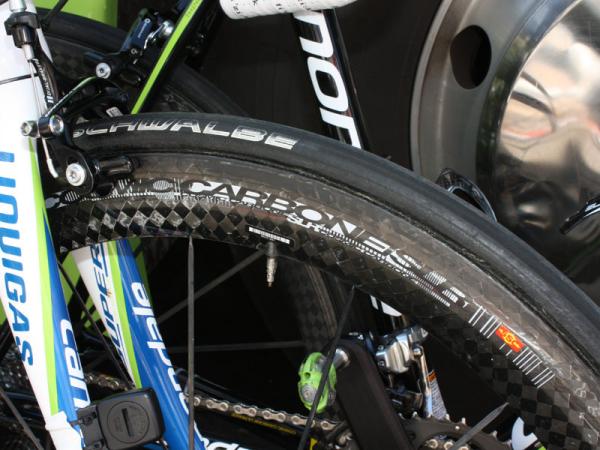
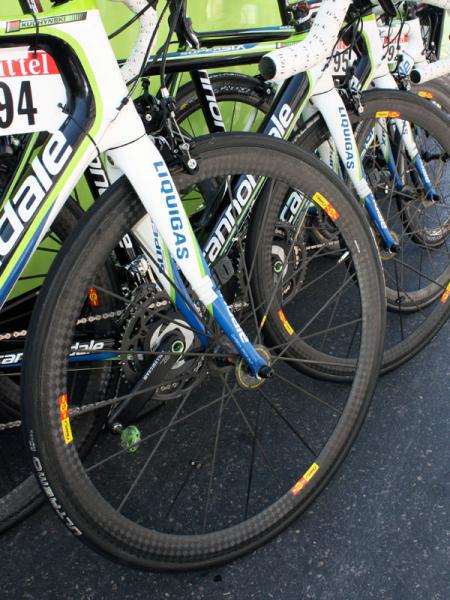
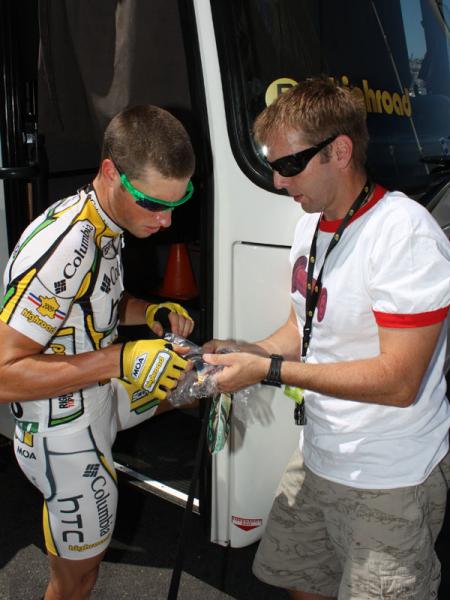
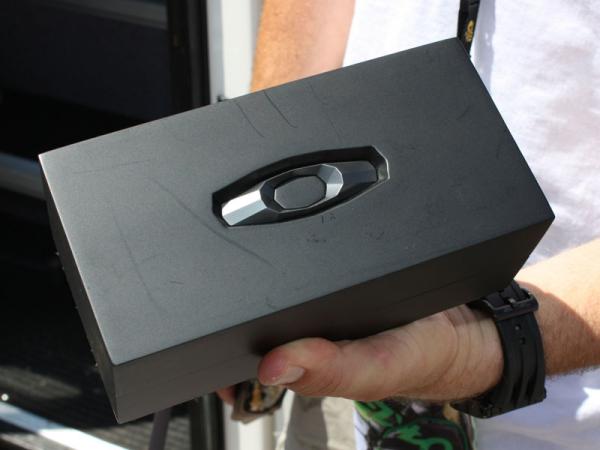
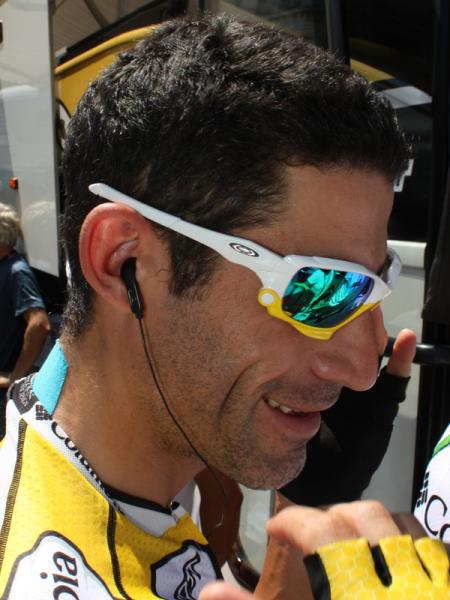
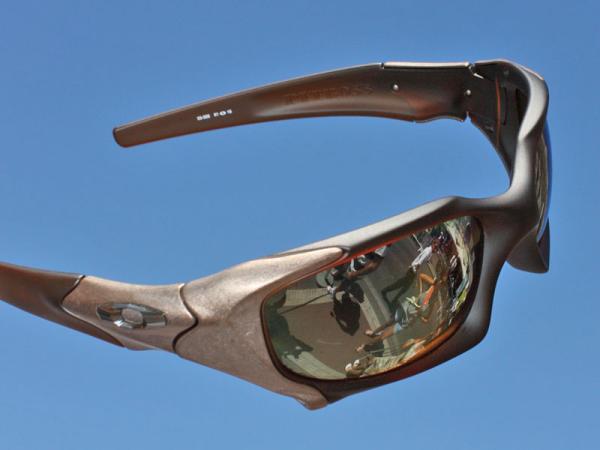
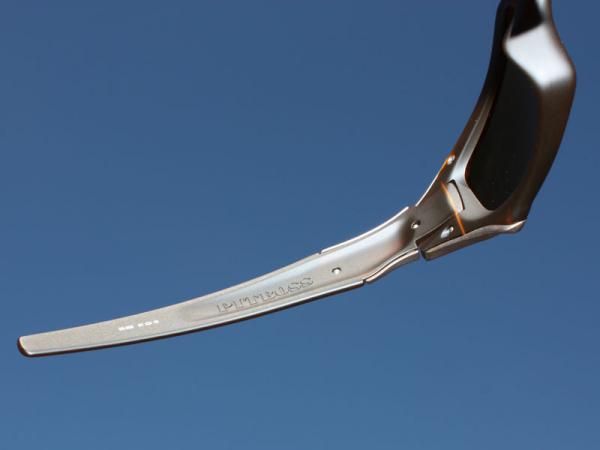
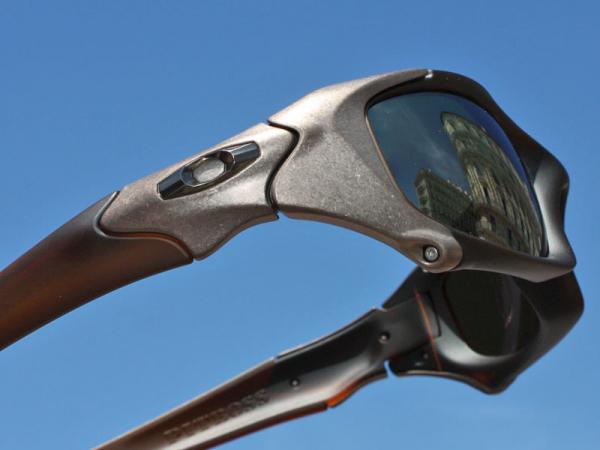
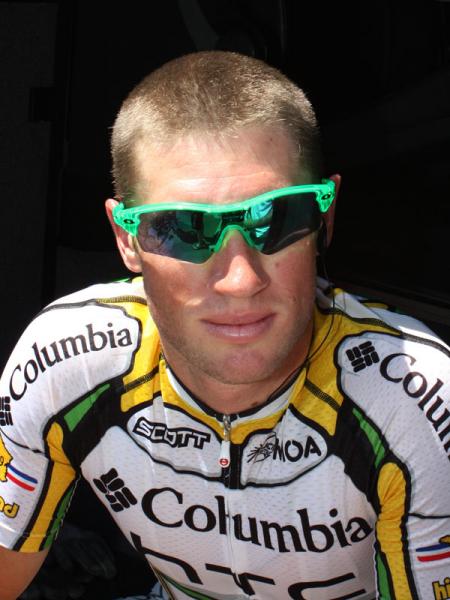
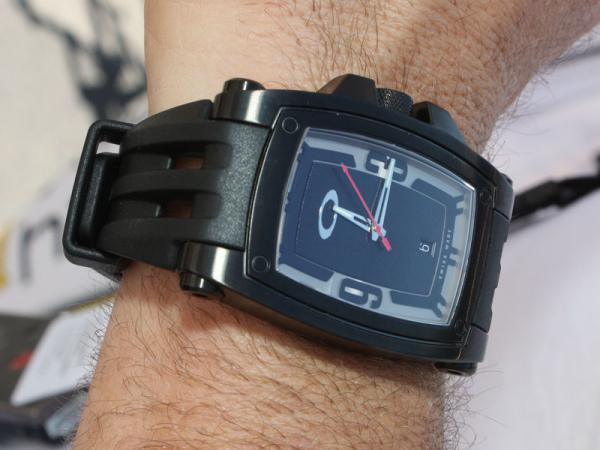
The 'Sprint Air Force', that is.
Team Columbia-High Road's superstar sprinter showed up to the line in Marseilles with one of the most elaborately finished machines in recent memory. His Scott Addict may be made of carbon fiber but its dark grey surface looks more like the riveted aluminum skin of a an old WWII dogfighter.
The theme continues further with a painted-on pin-up girl on the head tube, a classically styled 'Cavendish' scrawled in cursive on the top tube, and a pseudo-British Royal Air Force roundel on the seat cluster. The inner sides of the chain stays and fork blades even feature fake cutaways with images of hydraulic lines and wires running beneath.
The best part however is still a work in progress. Just as fighter pilots mark their planes with each successive kill, Cavendish's top tube wore a small pair of wings to celebrate his stage victory in Montpellier – and tomorrow there will be yet another set after his clear victory into La Grande-Motte.
No surprisingly, the graphics designer left an awful lot of room on that top tube, perhaps knowing that Cavendish intends to make it all the way to Paris this year. How many more pairs of wings will there be by the end of the Tour?
New Oakley premium collection on the way
If you already thought Oakley sunglasses were expensive, you'd better grab a seat and hold on tight to your Foster Grants. Oakley showed off an even more premium Elite range of eyewear at this year's Tour de France that features a decidedly keener sense of style, a more labor-intensive assembly process and higher-end materials – not to mention a price to match.
The latest race content, interviews, features, reviews and expert buying guides, direct to your inbox!
The Elite collection will comprise three different models, the first of which is a more lifestyle-oriented piece dubbed PitBoss. The overall shape uses some familiar Oakley styling cues but the sides of the frame and forward section of the temples are now covered in forged titanium plates for a unique look. Custom orbital bolts hold the lenses in careful alignment, the 'O' icon bears an exclusive faceted surface and it all comes in its own special case, too.
Of course, there is also a lot of attention paid to the PitBoss' optics, which employ the full range of Oakley technologies: High Definition Optics geometry, a polarizing filter, and the handy oil- and waterproof permanent hard coating. The PitBoss will also be offered in a prescription version.
Suggested retail cost however is a priority-reevaluating US$750-800.
Oakley is keeping mum on the next two Elite models but its web site strongly suggests that carbon fiber will somehow be involved. Given their anticipated U$1,500 and US$4,000 price tags, we would expect as such – plus maybe a nice dinner for two and tickets to a show.
In other Oakley new, the popular Radar will now be offered in a new ultra-bright green frame color called 'Anti-Freeze', there's a new 7mm-taller Radar XL lens to give riders a clearer view of the road when their heads are down (think time trial and triathlon) – and consumers will be able to create their own custom Jawbone color combinations beginning September 2009.
Liquigas shows up to Stage 3 with new Mavic wheels
For stage 3, Liquigas equipped some of its Cannondale SuperSix Hi-Mod team bikes with Mavic's previously elusive deeper-section carbon wheels – only loosely disguised with some production Cosmic Carbone SLR decals.
First and foremost, the new as-yet-unnamed wheels bear more aggressively profiled all-carbon tubular rims measuring roughly 55mm tall as compared to the current Cosmic Carbone Ultimate's more versatile 40mm dimension. In addition, these prototypes eschew co-molded carbon spokes in favor of more conventional straight-pull bladed spokes made of stainless steel (16 front/20 rear) plus internal nipples for easier serviceability.
Like the Ultimate though the rim looks to be a true one-piece construct with a structural carbon skin – versus the SLR with its aluminum rim and somewhat squishy carbon 'cap' – so the spokes are anchored right in the rim apex and not further in by the tire. Readers may debate the relative advantages of each arrangement but at the very least, this setup yields shorter and slightly lighter spokes.
The rear hub looks to be borrowed from the similarly steel-spoked Cosmic Carbone SL but the front is a unique bit built with a carbon fiber shell and aluminum flanges. Mavic's convenient one-tool bearing adjustment mechanism carries over as well.
Mavic was mum on further details when asked, offering only the following statement: "Those are specially designed SSC [Special Service Course] product for now," said US marketing director Sean Sullivan. "This is just more athlete testing under our SSC program. There are a couple of new wheels they're testing out and have been riding since late spring. Keep your eyes peeled in the aero category."
As a result we have no claimed weights to report for now. However, based on the known figures for the various members of the Cosmic Carbone family (Ultimate, SLR and SL), we would estimate these prototypes to be less than 1,400g for the pair – not ultralight but still quite competitive.
